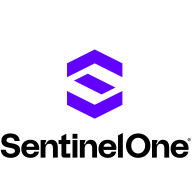

SentinelOne Singularity Complete and Microsoft Defender for Endpoint compete in the cybersecurity software market. Based on feature comparisons, SentinelOne seems to have the upper hand due to its robust rollback functionality, which is particularly effective against ransomware attacks.
Features: SentinelOne Singularity Complete offers robust rollback functionality, AI-based threat detection, and active EDR capabilities that operate independently of the cloud. These features enhance its reliability against various malware threats. Microsoft Defender for Endpoint integrates seamlessly with Microsoft products and provides comprehensive protection in Windows environments, although it lacks the advanced rollback functionality that SentinelOne includes.
Room for Improvement: SentinelOne Singularity Complete could benefit from enhancing its management console with more customizable reporting, improving the granularity of user roles, and refining agent updates. Users have also noted its relatively high price point as a potential downside. Microsoft Defender for Endpoint could enhance its threat detection speed, improve integration with non-Microsoft platforms, and simplify its user interface, which some find complex.
Ease of Deployment and Customer Service: SentinelOne Singularity Complete supports various deployment environments, including Private, Public, and Hybrid Clouds, and offers responsive customer service, though support speed varies by tier. Microsoft Defender for Endpoint is pre-integrated with Windows setups, facilitating deployment in on-premises and Public Cloud environments. However, users often request improved support response times and easier deployment for non-Microsoft settings.
Pricing and ROI: SentinelOne Singularity Complete is more expensive than some alternatives but delivers value through features like rollback, which enhance the security posture and reduce incident response time. Users appreciate the flexibility offered by scaling and bundling options. Microsoft Defender for Endpoint, typically included with Windows, presents an economical choice for existing Microsoft ecosystem users, although full functionality often requires more costly licensing tiers.
Without detection and protection measures, organizations would face substantial payments and reputational damage, including the necessity to inform customers about data breaches, potentially leading to loss of business.
We have seen a return on investment when using Microsoft Defender for Endpoint, as it saves labor by reducing the need for staff to focus on it.
The biggest return on investment for me when using Microsoft Defender for Endpoint is the time saving.
SentinelOne Singularity Complete has helped reduce my organization's mean time to detect by fifty percent.
Since then, I have not faced any intrusions, which is one reason I chose SentinelOne over ESET.
We have not faced any attacks since we implemented it.
The Microsoft agent, who did not actually work for Microsoft, is one of the vendors that Microsoft uses for support, said, 'Just to set expectations, my lunch break is in an hour and I am going to go away then.'
The level-one support seems disconnected from subject matter experts.
I rate Microsoft support 10 out of 10.
We are using the automated email process for support, and they respond within an hour or two hours sometimes.
A chat service would be beneficial.
The technical support from SentinelOne Singularity Complete is very active and good, with a strong knowledge base available online.
We managed to scale it out in a short amount of time, with two months of planning and three months of implementation on 10,000 computers.
Microsoft Defender for Endpoint is scalable enough to handle various devices across environments, whether they are laptops, Android devices, or operating in hybrid environments.
Compatibility is its main feature.
It's all auto-scale and auto-categorized, configuring automatically.
SentinelOne Singularity Complete is very scalable.
My deployment is relatively small, and SentinelOne Singularity Complete works within those constraints.
I haven't seen any outages with Microsoft.
I rate Defender 10 out of 10 for stability.
Defender for Endpoint is extremely stable.
This indicates room for improvement in stability when interacting with other solutions.
Initially, there were issues, particularly on the management side, but now the console is much more stable.
Everything is managed automatically, so there is no user interference needed for upgrades.
Repeated interactions are necessary due to Level One's lack of tools and knowledge, hindering efficient problem-solving and negatively impacting our experience with Microsoft support.
In contrast, competing products offer reduced pricing for long-term commitments, which makes it difficult for us in that environment.
We use Microsoft partners to help govern the platform, and as part of an alliance, we want to gather data from each tenant and combine them for a complete view.
The only thing that prevented the attack from succeeding was a free version of Malwarebytes.
Providing a single pane of visibility for the end user would be beneficial.
That seems to play a little havoc and can conflict with manual installs, causing issues where it wants to delete and reinstall the client.
That has been the trend we have seen with Microsoft lately—it is just getting more and more expensive.
Given our extensive Microsoft licensing, transitioning to Defender for Endpoint did not affect licensing costs.
It costs $15 per VM for the P2 plan, which is seen as affordable for customers.
If you want protection, you have to pay the price.
There are other products that are less expensive, but I tell my clients that in security, they cannot cut corners or look for the cheapest solution.
Reputation and quality are important, but especially in today’s economy, price is a significant factor.
Defender for Endpoint's coverage across different platforms in our environment is pretty good. We have devices running Linux, Mac OS, Windows, iOS, and Android. It covers all of them.
Microsoft Defender for Endpoint provides a unified management interface allowing customers to manage their on-premises and hybrid infrastructures from a single pane.
One of the best features of Microsoft Defender for Endpoint is its database for identifying zero-day attacks or malware attacks.
I have an advanced app providing visibility of all my endpoints, which was not the case before.
SentinelOne has a feature to decommission automatically, which has been fantastic.
There's also automation that gives my team free time, preventing them from having to look for every alert.
| Product | Market Share (%) |
|---|---|
| Microsoft Defender for Endpoint | 7.9% |
| SentinelOne Singularity Complete | 5.1% |
| Other | 87.0% |


| Company Size | Count |
|---|---|
| Small Business | 80 |
| Midsize Enterprise | 40 |
| Large Enterprise | 92 |
| Company Size | Count |
|---|---|
| Small Business | 87 |
| Midsize Enterprise | 44 |
| Large Enterprise | 76 |
Microsoft Defender for Endpoint is a comprehensive security solution that provides advanced threat protection for organizations. It offers real-time protection against various types of cyber threats, including malware, viruses, ransomware, and phishing attacks.
With its powerful machine-learning capabilities, it can detect and block sophisticated attacks before they can cause any harm. The solution also includes endpoint detection and response (EDR) capabilities, allowing organizations to quickly investigate and respond to security incidents. It provides detailed insights into the attack timeline, enabling security teams to understand the scope and impact of an incident.
Microsoft Defender for Endpoint also offers proactive threat hunting, allowing organizations to proactively search for and identify potential threats within their network. It integrates seamlessly with other Microsoft security solutions, such as Microsoft Defender XDR, to provide a unified and holistic security approach. With its centralized management console, organizations can easily deploy, configure, and monitor the security solution across their entire network.
Microsoft Defender for Endpoint is a robust and scalable security solution that helps organizations protect their endpoints and data from evolving cyber threats.
SentinelOne Singularity Complete delivers advanced endpoint protection leveraging AI-driven threat detection and behavior analysis for efficient malware and ransomware response. Its standout features enhance security insights and ensure comprehensive endpoint management.
SentinelOne Singularity Complete provides robust ransomware recovery through unique rollback capabilities and seamless integration with various security solutions. Its machine learning enhances endpoint protection, minimizing false positives and automating responses. While praised for real-time threat monitoring, incident management, and asset management, it faces challenges in managing the console, customizing UI, and maintaining policy flexibility. Some users report difficulties with deployment and integration with existing systems, and enhanced reporting, alert management, and documentation are desired. Its appeal extends to deploying across multiple operating systems, offering comprehensive security coverage and facilitating cybersecurity compliance.
What standout features does SentinelOne Singularity Complete offer?Industries implement SentinelOne Singularity Complete for its AI capabilities in advanced endpoint protection, particularly against malware and ransomware. It's utilized across diverse operating systems, aiding in real-time threat monitoring and facilitating compliance. Organizations use it for vulnerability assessments and asset management, ensuring optimal protection in complex IT environments.
We monitor all Endpoint Detection and Response (EDR) reviews to prevent fraudulent reviews and keep review quality high. We do not post reviews by company employees or direct competitors. We validate each review for authenticity via cross-reference with LinkedIn, and personal follow-up with the reviewer when necessary.